Honduras

 The islands of Honduras remain virtually untouched by foreign intervention, leaving them unspoiled by tourists but damaged
by the indigenous population that is largely uneducated. Luxuries are non-existent, and the only tourist trade of consequence
are the resorts built to attract divers who can still see the natural barrier reef as it has grown during the past 10,000 years.
There are many small, inexpensive hotels with a few rooms that offer the more rugged traveler a bed, breakfast and a shared
bath - some even have hot water.
The islands of Honduras remain virtually untouched by foreign intervention, leaving them unspoiled by tourists but damaged
by the indigenous population that is largely uneducated. Luxuries are non-existent, and the only tourist trade of consequence
are the resorts built to attract divers who can still see the natural barrier reef as it has grown during the past 10,000 years.
There are many small, inexpensive hotels with a few rooms that offer the more rugged traveler a bed, breakfast and a shared
bath - some even have hot water.
Regional Water Conditions - Water temperatures generally remain around 82F year round, seldom fluctuating. The best
season to dive is from October through April; the rainy season is from November through January, and September is the
hottest (temperatures in the 90s). There is a slight surge of waters around each of the three islands, depending on the dive
site. Underwater canyons, caves, caverns, walls and reefs abundant with coral abound in what is believed to be the second, if
not the largest living coral reef in the world.
The warm Caribbean water is quite beautiful, with visibility usually from 50-100', even more at certain times of year. Divers
enjoy the tranquility of a truly natural underwater world, with its wide diversity of sea life. Hundreds of varieties of tropical
fish can be seen, although not as plentiful in some areas because of a reduced coral growth that affords less protection, and a
decrease in their food source. Marine life includes angel fish, morays, sea turtles, rays, dolphins, grouper, parrotfish, and
dozens of tropical varieties. Larger pelagics rarely visit the area, but lucky divers can encounter dolphin and rays.
Unfortunately, in the waters around the populated areas of each island you'll find the same result that is inherent in any nation
without an ecological program in force to protect the environment - the waters of the sea are both sewers and garbage
dumps to the local populations. Efforts are under way to clean up the seas, and to educate the people on proper hygiene and
care of their local eco-systems.
Roatan
The island of Roatan is about 30 miles off the mainland of Honduras, is approximately 30 miles long and averages 4 miles in
width. The island offers a tropical setting on palm-fringed coastlines. The central low-lying hills are lush with low jungle
foliage. "Urbanized" areas are typically composed of small, cinderblock or stucco Hispanic structures. Roads are poorly
maintained, being either broken asphalt, or more frequently dirt. Transportation is on foot, or by taxi, bus or bicycle, although
some rental cars may be available with advance reservations. Although a Crown Colony until 1933, the island was ceded to
Honduras by the British, leaving the locals with minimal influence by the British, and a primarily Spanish heritage. Virtually all
tourist facilities are at the resorts, although local clubs offer entertainment, and a limited number of stores sell food and
clothing.
Dive Sites off Roatan
Calvin's Crack - a plateau atop a shallow reef facing a wall, Calvin's Crack runs through the reef along narrows, widening
to an exit along the outer wall.
Barbareta Wall - 3 miles offshore from Roatan, the uninhabited, hilly island of Barbareta offers undiscovered reefs repleat
with coral gardens, a dramatic mile-long wall, while the island is framed by white sandy beaches and coves; the wall is a
continuous drop-off that usually offers great pelagic encounters.
Enchanted Forest and Insidious Reef - west of Romeo's Resort, these two dives are part of a larger reef associated with
an offshore bank. The drop-off begins from a series of rolling reefs that drop to 70' - 80', with Creole Wrasse and groupers
in abundance among the diverse sponge and coral growth.
West End Wall - a spectacular precipice borders a deep blue abyss, with pillar corals, Azure Vase Sponges and barrel
sponges, while in the deeper water divers are likely to find themselves among schools of pelagics and Eagle Rays.
Connie's Dream - 3-min from Romeo's Resort, this sloping drop-off provides tube and vase sponges among both red and
purple tube sponges, while a seemingly endless system of tall coral heads and deep sand channels fall into the abyss.
Romeo's Elbow - directly in front of the entrance channel to Romeo's Resort, this popular night dive provides divers with a
variety of life, including octopus, reef crabs and lobsters. A short swim leads divers to the wall.
Mary's Place - perhaps one of the most popular dive sites off Roatan, the dive starts at a permanent mooring buoy on the
reef shelf, along a vertical crevice that drops from 40', with a huge section of the wall broken away from the main section to
form a wide slit. Many smaller crevices invite exploration among bouquets of Rope and Tube Sponges, deepwater seafans
and Black Coral. A sand shelf drops from 140' to 200', offering a magnificent underwater view.
Trunk Turtle Bay Beach - on Barbareta Island, great for snorkeling and shallow dives
Pigeon Cays - three islets offshore Barbareta's south coast, with undiscovered dive sites.
"Prince Albert" - 140' tanker
Cayos Cochinos
Situated offshore about 20 miles south of Roatan, and 15 miles off the mainland north of the town of La Ceiba, divers
heading to either Roatan or Guanaja usually fly directly over Los Cochinos Cays. They appear as a mini-archipelago,
consisting of two lush hilly islands - Cochinos Grande (Big Hog) and Cochinos Paqueno (Little Hog), both centrally located
among a dozen low sandy cays. There is virtually no commercial development among the palms and tropical forests. The area
has been visited only by wilderness seekers, trekkers, or marine biologists intent on studying an undisturbed nature. There is
only one dive resort in the Cochinos, providing the diver with perfect opportunities to enjoy the tranquil waters, and to
engage in some spectacular underwater photography.
Dive Sites off Cayos Cochinos
Charlotte's Choice - a large reef starting at 15', between Round Cay and Lower Round Cay, drops rapidly on all sides;
Glass-eye snappers, pipefish, and the rare Quillfin Blenny can be seen
East Roatan Bank - 5-1/2 miles toward Roatan from Cochinos Grandeare three banks of reefs, the East Bank being a
large, oblong coral mound about the length of 6 football fields, from 40' - 130' in depth. Schools of goggle-eye Jacks, Silver
Spadefish, and groupers of all types
Airplane Wreck - in 50', a Cessna 302 twin engine wreck, intact
Hidden Valley Reef - shore dive, from 6' to 30', sand bottom with scattered coral heads toward a sloping reef with
overhangs and ledges; good night dives will reveal octopus, High Hats, pufferfish, shrimp, solitary tunicates, and small eels
Pelikan One, Two & Three - three buoys mark this string of dive sites just offshore from Plantation Beach Resort; inner
and outer walls run along the ridge, with the outer wall from 15' to a depth of a bit more than 100'; abundant tunicates,
colorful sponges and reef formations; great night dive.
Jena's Cove - 30' sandy bottom, off the northwest side of Cochinos Pequeno; narrow canyons cut through a series of huge
coral heads and a fringing reef system
Thirty-Thirty - within swimming distance of Plantation Beach Resort, this undersea ridge and wall, nearly 1/2 mile long, has
huge coral heads and deep-cut ledges extending to about 90'; an assortment of Black Coral, Strawberry Tunicates
Chachajuate Wall - off Lower Monitor Cay (Chachajuate) is a vertical wall that starts at 20', dropping to about 90';
tunicates, sponges, deep water seafans and Black coral.
Utila
Utila (oo TEEL uh, or the Anglicized oo TILL uh), the smallest and lowest of the three Bay Islands, and only 7 miles long
and 3 miles wide, Utila is about 19 miles from the northern shore of the mainland. Generally flat, the island is covered with
palm trees and tropical forest. As with all three islands, there are biting insects to plague you, so take insect repellent.
Dive Sites off Utila
Southside - depths of 15-25' make for excellent shallow dives exploring the groove and tongue coral formations; walls slope
gradually to 70-80'. Hard corals are abundant, as are black coral. West from Jack Neal Point divers occasionally can see
spotted eagle rays.
Sea Mounts - dotted around within a few miles of the coast are sea mounts that reach up to within 30-45' of the surface,
sloping down to as much as 200'. Most of the lush soft coral in the Bay Islands is found on these mounts. Divers commonly
see snappers, spadefish, grouper, and pelagics wandering in from the deep, as well as resident green, spotted and goldentail
morays, puffers, and green turtles.
Ironshore - The volcanic coastline reaches along Utila's eastern shores, providing beautiful shallow dives as the waves break
overhead.
Northside - Turtle Harbor is a turtle nesting ground, as the name implies, and lies on the lip of the Continental shelf, creating
a plateau at 25', surrounded by pillar and star coral. A sheer wall drops down to over 1,000' below the hovering diver in
many places, while hard corals crowd together with profuse sponge formations. Fish include grouper, snapper, mackerel, and
rays at depth, with the occasional hawksbill and green turtle seen nesting on the shelves.
Whaleshark - it is not uncommon to see these huge mammals year-round off the coast of Utila.
Laguna Beach Shore Dive - about 150 yards offshore, the wall starts at 15', dropping to 100', featuring an abundance of
juvenile fish, tunicates, and stingrays. Coral formations follow the tongue towards the shallows, along which you'll see pillar
and elkhorn coral. Night dives offer a great chance to see lobster, shrimp and squid, as well as morays and conga eels.
Black Coral Wall - 80' sheer wall west of Laguna Beach Resort offers an abundance of young black coral trees and deep
water gorgonias starting at 20'.
Silver Gardens - Just north of Laguna Beach Resort is a large sandpatch in 15', dropping along a wall to 80', where you're
likely to see wrasse, heart urchins, sand dollars, and a school of reef squid swimming in formation. Black coral and small
caverns provide sanctuary to jewfish and the green moray eel.
Pretty Bush - shallow dive with distinct tongue and groove coral formations along wide, sandy patches.
Little Bight - sandy bottom gradually sloping to 70', flanked by 60' walls, home to garden eels, inverted anemones, sand
tilefish, queen conch, and razorfish,
Little Little Bight - a pleasant dive along the southside.
Cabbage Ridge - twin peaks due south of Little Bight, running north to south at about 40', joined by a ridge at 55'; dense
soft corals abound.
Jack Neal Point - turtles abound here, with large schools of redfin parrotfish inhabit the walls at 20', and southern stingrays
bask in the sand only 20 yards from shore.
Big Rock - a great wall dive
Cabanas - sharper wall dive, base at 100', with sea mounts and pinnacles rising to near the surface.
Stingray Point - out toward the Utila Cays, a sandy slope drops from 20' to over 100', flanked by a steep wall to both the
east and west. Good spot for southern stingrays and spotted eagle rays.
Triggerfish Reef - off Diamond Cay, this wall runs north to south, with a sea mount parallel to sandy canyons cutting across
the top at 25'. The wall is home to dense hard and soft corals, dropping to 130'. Look for deep ocean and black Durgon
triggerfish.
Raggedy Cay - Near a soon-to-be national marine park, this pristine wall starts at 30', and drops gently to a sandy base at
130'. Southern stingrays and large groupers bask at depth, and resident Porcupine pufferfish and spotted eagle rays can be
seen along the pillar coral-rich plateau.
Spotted Bay - Reef that gradually slopes from 30' to 130'.
Don Quickset - 10' very shallow plateau that drops off to 50', with a prominent canyon lying in all directions, providing a
meandering maze, and very interesting dive.
Old House - deep wall dive.
Willy's Hole - A maze-lie channel at 20-45', this wide canyon leads suddenly to a spectacular wall that drops suddenly to
200' to the east and west. Glassy sweepers are seen at deeper areas, whereas the shallows provide interaction with sergeant
majors, Bermuda chub, and brilliant juveniles.
Pinnacles - Rising dramatically from 140' to within 20' of the surface, divers can descend the chimney between the east side
of the pinnacle and the wall to 80' where you'll enter a twisting tunnel that exits at 130'. A sheer deep wall drops off to the
west, while to the east, the wall gives way to overhangs and a sandy canyon at 60'.
Great Wall - A "bottomless" sheer wall offers a dramatic dive among barrel sponges, schooling Yellowtail snapper and
Creole wrasse. A sandpatch at 50' parallels the wall, opening to the drop-off to the west.
Blue Hole - From a 25' plateau, north to its 65' base, this wall varies from a gentle slope to steep wall with overhangs,
despite its relatively shallow depth. A cavern opening in the sea floor teems with glassy sweepers dancing among the
stalactites and stalagmites.
Jake's Bight - Near a mangrove lagoon, this shallow dive (25') slopes through a series of canyons to 65'.
Aquarium - Along Utila's ancient volcanic shore, this unique dive offers divers interaction with large schools of grunts,
Spotted drum, trunkfish, Yellow stingrays, and the occasional Porcupine pufferfish, while the ironshore offers a colorful
variety of encrusting sponge, offset by the shafts of light that are diffused by the ocean waves above.
Cactus Patch - stretching from the Aquarium, this dive is from 20'-80', offering great specimens of elkhorn and lettuce leaf
coral.
Black Hills - enormous schools of pelagics teem in this, the best example of Utila's sea mounts.
Ship's Stern - A spacious cavern has been carved out of the ironshore, home to green moray, dog snappers, jackknife fish,
and glassy sweepers.
Rocky Point - 40' canyons lead to a drop-off along a steep wall, with the occasional turtle, but probable pelagic sightings.
Ted's Point - This site is rife with diverse fish life brought in by two strong converging currents. The wall drops sharply to
below 130' to the east, and to the west a gentle slope still lies at 60'.
Airport Caves - from 20' to 40', a series of caverns stretch along this section of reef, with three main entrances that are easy
to find. Dramatic night dive to find moray, octopus, lobster, and toadfish.
Ron's Wreck - This 35' wreck lies in 45' on a reef that reaches to within 50' of the surface; a selection of young sponges and
corals have colonized on the wreck since it sank in 1991.
Lighthouse Reef - from a shallow 10' to a drop off down to 60', this dive is typical of the fringing reef that lies parallel to
Utila's airport; Porcupine pufferfish and Green moray.
Laguna Beach Bank - half a mile south of Laguna Beach is a seamount that reaches to within 35' of the surface, home to a
myriad sea life; a green moray lives in the sandpatch, as do some friendly hawksbill turtle that were released from captivity in
1994.
Guanaja
The island of Guanaja is approximately 13 miles long and 3 miles wide, with rugged jungle hills peaking along the length down
the center. Tourists can take a plane from the States to either La Ceiba or San Pedro Sula, two of the major airports in
Honduras, and then fly a smaller 18-seater to Guanaja...usually in the company of locals carrying bags, boxes or crates of
vegetables, clothing, or the occasional animal. You'll arrive at the one-runway airport that sits less than 3' above sea level,
and are met by chickens, goats, and a water taxi show drive will take you to your hotel or resort. There are no roads on the
island, and no cars...All travel is by water taxi, even when one only wants to go "next door." The suddenly dense jungle
foliage prohibits most pedestrian traffic around the island.
The small town of Bonacca is situated about 250 yards offshore, and was constructed by dumping refuse and debris into the
gap that separated two adjacent cays. The town was built by the inhabitants as a way to escape from the millions of
"no-see-ums" and mosquitoes that enjoy repopulating the island itself (As the saying goes, "There's not a single mosquito in
Honduras. They're all married, with very large families.") In Bonacca, there are several small stores that supply locals with
food and a few dry goods, a fewer shops that sell clothing, although none are oriented for the visiting tourist; local taverns and
a few dance halls are safe to visit in the evening. Most surprising are the many different churches throughout the town that
have been built by Mormons, 7th Day Adventists, Methodists, and Baptist missionaries. A walk through the town (no
vehicles here, either) takes about an hour, including a stop for a (warm) beer at a local tavern. If you shop, plan on staying
two hours.
Dive Sites off Guanaja
Black Rock - a fabulous dive to 90', through a cavern that winds through the massive black rock cliff that drops from the
cliffside into the depths below, making for a great dive.
Barbareta Island
This 1200 acre island lies off the northeastern coast of Roatan, and has a single resort, located on the water's edge, that
consists of a house with four guest rooms with ocean-front terraces, and two nearby, private cabanas. The island itself is
relatively hilly, with minimal beaches primarily around the resort. An exciting growth of tropical rain forest distinguishes
Barbareta from the more well-known Bay Islands.
Access to the island is by a charter flight from Roatan or mainland Honduras, or a two-hour boat ride from Roatan.

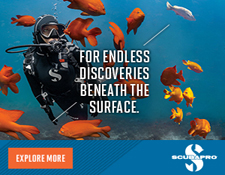
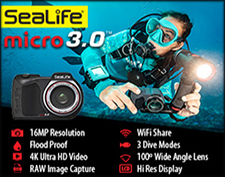
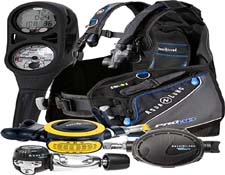


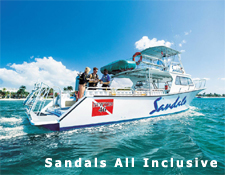



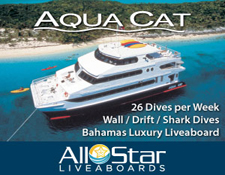
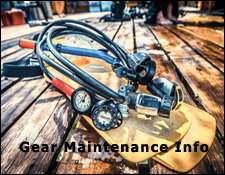













 The islands of Honduras remain virtually untouched by foreign intervention, leaving them unspoiled by tourists but damaged
by the indigenous population that is largely uneducated. Luxuries are non-existent, and the only tourist trade of consequence
are the resorts built to attract divers who can still see the natural barrier reef as it has grown during the past 10,000 years.
There are many small, inexpensive hotels with a few rooms that offer the more rugged traveler a bed, breakfast and a shared
bath - some even have hot water.
The islands of Honduras remain virtually untouched by foreign intervention, leaving them unspoiled by tourists but damaged
by the indigenous population that is largely uneducated. Luxuries are non-existent, and the only tourist trade of consequence
are the resorts built to attract divers who can still see the natural barrier reef as it has grown during the past 10,000 years.
There are many small, inexpensive hotels with a few rooms that offer the more rugged traveler a bed, breakfast and a shared
bath - some even have hot water.













